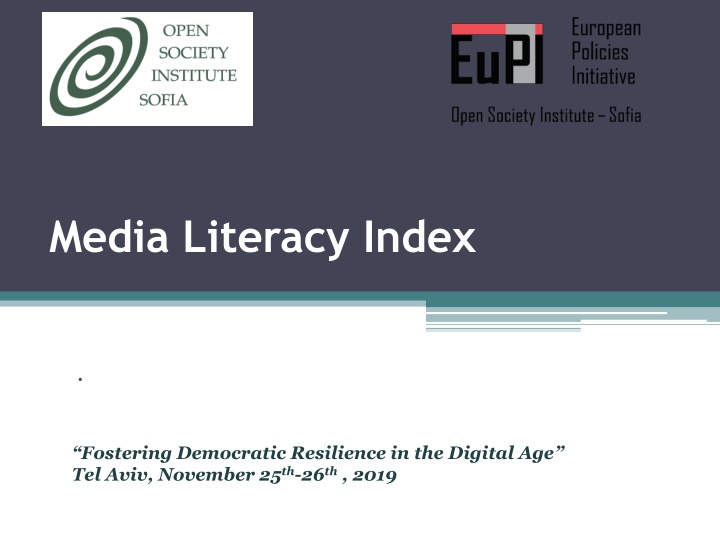
Media Literacy Index and Democratic Resilience in the Digital Age
Explore the Media Literacy Index assessing the potential impact of fake news and post-truth phenomena in 35 European countries. Understand the methodology, indicators, and strategies to enhance media literacy for democratic resilience.
Download Presentation

Please find below an Image/Link to download the presentation.
The content on the website is provided AS IS for your information and personal use only. It may not be sold, licensed, or shared on other websites without obtaining consent from the author. If you encounter any issues during the download, it is possible that the publisher has removed the file from their server.
You are allowed to download the files provided on this website for personal or commercial use, subject to the condition that they are used lawfully. All files are the property of their respective owners.
The content on the website is provided AS IS for your information and personal use only. It may not be sold, licensed, or shared on other websites without obtaining consent from the author.
E N D
Presentation Transcript
Media Literacy Index . Fostering Democratic Resilience in the Digital Age Tel Aviv, November 25th-26th , 2019
The potential of 35 European countries to the impact of fake news and the post-truth phenomenon by employing media freedom, education and interpersonal trust indicators. index is assessing the resilience
The Ingredients of Media Literacy Methodology of the Media Literacy Index Indicators Weight Media Freedom indicators Freedom of the Press score by Freedom House Press Freedom Index by Reporters without Borders Education indicators PISA score in reading literacy (OECD) PISA score in scientific literacy (OECD) PISA score mathematical literacy (OECD) Share of population (%) with university degree (Eurostat) Trust Trust in others (Eurostat) New forms of participation E-participation Index (UN) 20% 20% 30% 5% 5% 5% 10% 5% The table shows the methodology of the media literacy index with the groups of indicators, sources and their respective weight (importance). The data are converted into standardized scores (z-scores) from 100 to 0, highest to lowest.
What can be done? Education before regulation Back to basics approach Media freedom, Rebuilding trust, Education The context is important - still focus on traditional media TV, radio, print media Thinking about regulation? Self-regulation and code of ethics Social media hate speech, private data Non-governmental action Education - functional education, specialized media literacy, digital literacy Updating code of ethics for the current times Fact-checking Support to independent, professional media What is missing?
Marin Lessenski mlessenski@osi.bg www.osis.bg






















